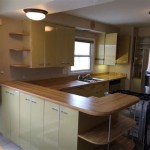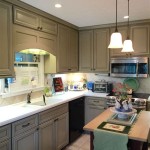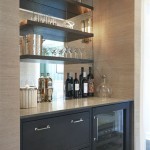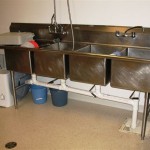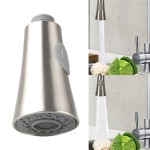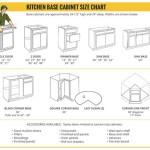Average Cost Of Kitchen Remodel With Appliances: A Comprehensive Guide
Remodeling a kitchen is a significant undertaking that can drastically improve both the functionality and aesthetic appeal of a home. A crucial aspect of planning such a project involves understanding the associated costs, particularly when new appliances are included. The average cost of a kitchen remodel with appliances can vary considerably depending on numerous factors, including the size of the kitchen, the scope of the renovation, the quality of materials and appliances selected, and the geographical location of the project. This article provides a detailed overview of the factors influencing kitchen remodel costs with a focus on appliances, enabling the homeowner to develop a realistic budget and make informed decisions.
Key Factors Affecting Kitchen Remodel Costs
Several elements contribute to the overall expense of a kitchen renovation. These factors interact to determine the final project cost. Understanding these elements is crucial for accurate budgeting and project management.
Size and Layout: The physical dimensions of the kitchen significantly impact the cost of the remodel. Larger kitchens require more materials, labor, and appliance sizes, translating into higher expenses. Modifying the existing layout by moving walls, plumbing, or electrical fixtures can also substantially increase costs. Open-concept designs often involve removing walls, requiring structural modifications that can be expensive.
Scope of the Renovation: Kitchen remodels range from minor cosmetic updates to complete overhauls. A minor remodel might involve replacing cabinet doors, painting walls, and upgrading the faucet. A major remodel, on the other hand, could entail replacing all cabinets, countertops, appliances, flooring, and lighting. The more extensive the renovation, the higher the overall cost. A kitchen remodel can be categorized into these levels: cosmetic, mid-range, and high-end.
Materials and Finishes: The choices made regarding materials and finishes will greatly influence the project's budget. Cabinet materials, countertop surfaces, flooring types, and backsplash materials all come in a wide range of prices. For example, stock cabinets are generally more affordable than custom-built cabinets. Granite or quartz countertops are more expensive than laminate or tile. Solid hardwood flooring is typically more costly than vinyl or tile flooring. Selecting higher-end materials will naturally increase the overall cost of the remodel.
Appliances: The type and brand of appliances selected have a significant impact on the final cost. Basic appliances are more affordable than high-end, professional-grade appliances. The number of appliances being replaced also affects the total cost. Replacing a refrigerator is cheaper than replacing all major appliances, including the refrigerator, oven, cooktop, microwave, and dishwasher. Energy-efficient appliances may have a higher initial price but can lead to long-term energy savings. Features such as smart technology or specialized functions will contribute to the price of appliances.
Labor Costs: Labor costs comprise a substantial portion of the total remodel expense. The cost of labor varies based on the location, the complexity of the project, and the contractor's rates. Hiring licensed and insured contractors is crucial to ensure quality workmanship and protect against potential liabilities. Obtaining multiple bids from different contractors will allow the homeowner to compare prices and services.
Geographic Location: Construction costs can vary significantly depending on the geographic location. Labor rates, material costs, and permitting fees tend to be higher in urban areas and areas with a higher cost of living. Consulting with local contractors and suppliers can provide a more accurate estimate of costs in a specific region.
Unexpected Costs: It's prudent to factor in a contingency fund for unexpected costs that may arise during the remodel. These unexpected costs can include discovering hidden plumbing or electrical issues, encountering structural problems, or needing to make unexpected changes to the design plan. A contingency fund of 10-15% of the total budget is generally recommended.
Cost Breakdown: Appliances and Other Components
To understand the average cost of a kitchen remodel with appliances more comprehensively, it's important to break down the expenses associated with each component of the renovation. The following provides a general overview of the percentage of the budget typically allocated to different areas:
Cabinets: Cabinets often account for the largest portion of the kitchen remodel budget, typically ranging from 30% to 40% of the total cost. The price of cabinets depends on the material, style, and whether they are stock, semi-custom, or custom-built.
Appliances: Appliances typically represent 15% to 20% of the total kitchen remodel cost. This category encompasses the refrigerator, oven, cooktop, microwave, dishwasher, and any other specialized appliances. The cost of appliances can vary greatly depending on the brand, features, and energy efficiency.
Countertops: Countertops usually account for 10% to 15% of the budget. The cost will depend on the material selected, such as laminate, tile, granite, quartz, or solid surface. The size and complexity of the countertop installation also influence the cost.
Flooring: Flooring generally represents 5% to 10% of the total cost. The choice of flooring material, such as tile, wood, laminate, or vinyl, will affect the price. The size of the kitchen and the complexity of the installation also contribute to the overall cost.
Lighting: Lighting fixtures and installation typically account for 5% to 10% of the budget. This includes new overhead lighting, under-cabinet lighting, and pendant lights. The complexity of the electrical work required will influence the cost.
Plumbing: Plumbing fixtures and labor typically represent 5% to 10% of the total remodel cost. This includes the sink, faucet, garbage disposal, and any necessary plumbing modifications. Relocating plumbing can significantly increase this expense.
Labor: Labor costs typically account for 20% to 35% of the total budget. This includes the cost of hiring contractors, electricians, plumbers, and other professionals. The complexity of the project and the location of the project will affect the labor costs.
Based on this breakdown, a mid-range kitchen remodel with appliances might cost between $25,000 and $50,000, while a high-end remodel could easily exceed $75,000 or more. These are generalized estimates, and the actual cost will depend on the specific factors mentioned earlier.
Strategies for Managing Kitchen Remodel Costs
While a kitchen remodel can be a significant investment, there are several strategies to manage costs and stay within budget. Thoughtful planning and careful decision-making are essential for a successful and affordable renovation.
Prioritize Needs and Wants: Before starting the remodel, create a list of the needs and wants for the new kitchen. Prioritize the essential elements, such as functional appliances and durable cabinets, and then consider the desired upgrades, such as high-end finishes or luxury features. This will help allocate the budget effectively and avoid overspending on less critical items.
Shop Around for Appliances: Research and compare prices from different retailers and brands before purchasing appliances. Consider purchasing appliances during sales or promotional periods to save money. Explore options such as scratch-and-dent appliances or open-box models, which may be available at a discounted price. Evaluate energy-efficient models, as they can lead to long-term savings on utility bills.
Consider Refacing Cabinets: If the existing cabinet boxes are in good condition, consider refacing them instead of replacing them entirely. Refacing involves replacing the cabinet doors and drawer fronts and applying a new veneer to the existing boxes. This can save a significant amount of money compared to installing new cabinets.
DIY When Possible: If the homeowner has the necessary skills and experience, consider tackling some of the less complex tasks, such as painting, installing a backsplash, or replacing light fixtures. This can help reduce labor costs. However, it's important to be realistic about skills and limitations and avoid attempting tasks that require professional expertise, such as electrical or plumbing work.
Obtain Multiple Bids: Get quotes from several contractors before hiring one. This allows price comparison and also ensures that the homeowner sees different perspectives. Review the bids carefully and compare the scope of work, materials, and labor costs. Verify that each contractor is licensed and insured. Check online reviews and ask for references from previous clients. Select a contractor who is experienced, reputable, and offers a competitive price.
Plan the Layout Carefully: Avoid making significant changes to the existing kitchen layout unless absolutely necessary. Moving plumbing or electrical lines can be expensive and time-consuming. Work with a kitchen designer or contractor to optimize the layout without incurring unnecessary costs. Maximize the use of existing space and consider space-saving solutions, such as pull-out shelves or corner cabinets.
Choose Materials Wisely: Explore different material options and compare the costs and benefits of each. Laminate countertops, for example, are more affordable than granite or quartz. Vinyl flooring is typically less expensive than hardwood or tile. Consider using a combination of materials to balance cost and aesthetics. For example, using granite countertops on the island and laminate countertops on the perimeter counters can save money without compromising the overall look of the kitchen.
Set a Realistic Budget: Establish a realistic budget for the kitchen remodel based on research, quotes, and personal financial situation. Factor in a contingency fund for unexpected expenses. Track expenses carefully throughout the project and make adjustments as needed to stay within budget. Be prepared to make compromises and prioritize spending on the most important elements of the renovation.
By taking these steps, the homeowner can control the cost of remodeling a kitchen with appliances while still creating a functional and stylish space.

A Detailed Look At Kitchen Remodeling Costs And Components

2024 Average Kitchen Remodeling Cost World Coppersmith

How Much Does It Cost For The Average Kitchen Remodel Superior Stone Cabinet

Kitchen Remodeling Costs Phoenix

How Much Does A Kitchen Remodel Cost Home Pride Construction

The Cost Of A Kitchen Remodel Understanding Your Budget

2025 Los Angeles Kitchen Remodel Costs And Tips

2024 Average Kitchen Remodeling Cost World Coppersmith

What Is The Average Kitchen Remodel Cost

How Much Does It Cost To Upgrade Kitchen Appliances For A Remodel Ranney Blair Weidmann
Related Posts

